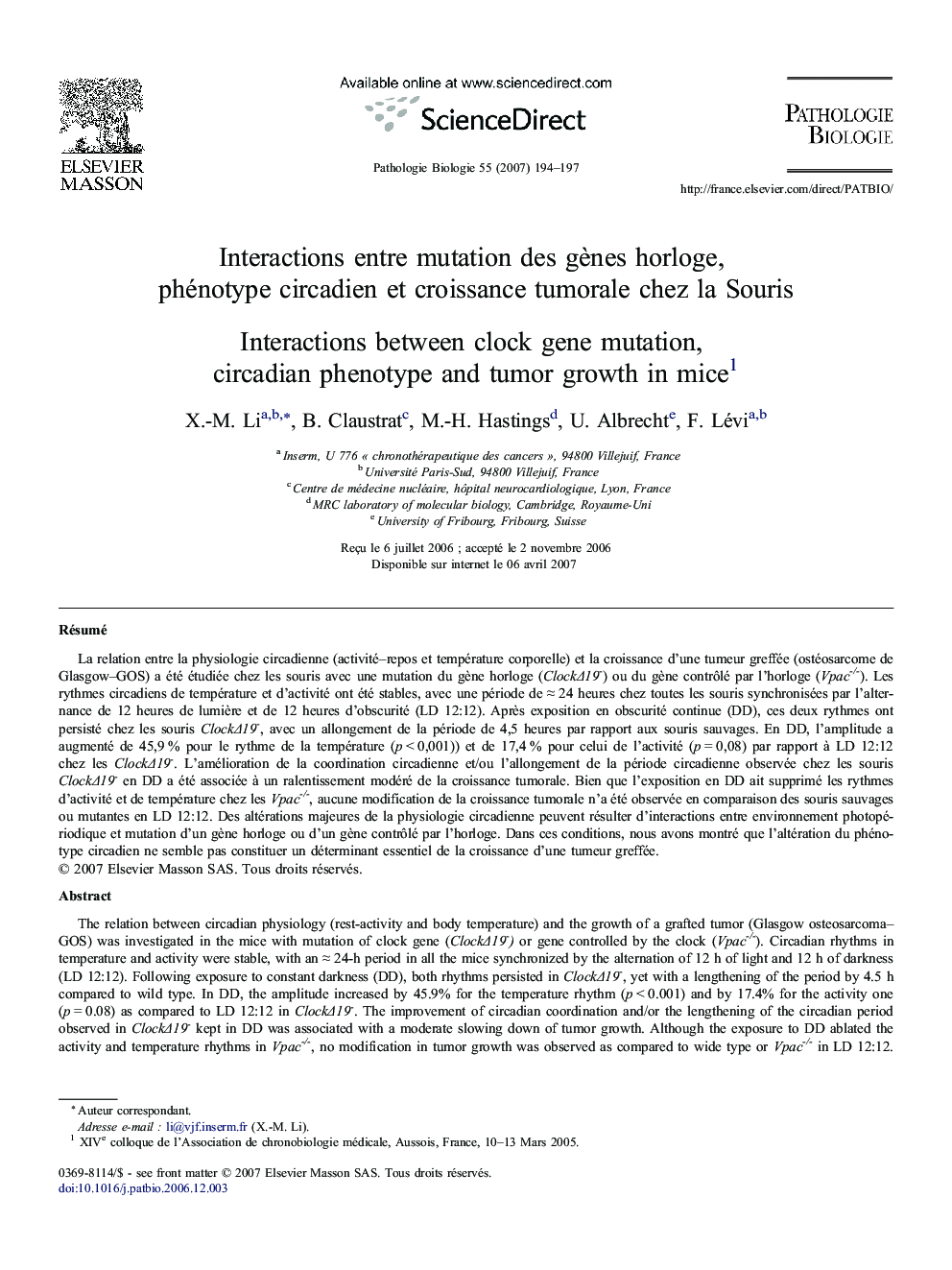| Article ID | Journal | Published Year | Pages | File Type |
|---|---|---|---|---|
| 4136795 | Pathologie Biologie | 2007 | 4 Pages |
Abstract
The relation between circadian physiology (rest-activity and body temperature) and the growth of a grafted tumor (Glasgow osteosarcoma-GOS) was investigated in the mice with mutation of clock gene (ClockÎ19-) or gene controlled by the clock (Vpac-/-). Circadian rhythms in temperature and activity were stable, with an â 24-h period in all the mice synchronized by the alternation of 12 h of light and 12 h of darkness (LD 12:12). Following exposure to constant darkness (DD), both rhythms persisted in ClockÎ19-, yet with a lengthening of the period by 4.5 h compared to wild type. In DD, the amplitude increased by 45.9% for the temperature rhythm (p < 0.001) and by 17.4% for the activity one (p = 0.08) as compared to LD 12:12 in ClockÎ19-. The improvement of circadian coordination and/or the lengthening of the circadian period observed in ClockÎ19- kept in DD was associated with a moderate slowing down of tumor growth. Although the exposure to DD ablated the activity and temperature rhythms in Vpac-/-, no modification in tumor growth was observed as compared to wide type or Vpac-/- in LD 12:12. Major alternations of circadian physiology can result from interactions between photoperiodic environment and mutation of clock gene or gene controlled by the clock. In these conditions, we have shown that the alternation of the circadian phenotype does not seem to constitute an essential determinant of the growth of a grafted tumor.
Related Topics
Health Sciences
Medicine and Dentistry
Pathology and Medical Technology
Authors
X.-M. Li, B. Claustrat, M.-H. Hastings, U. Albrecht, F. Lévi,
